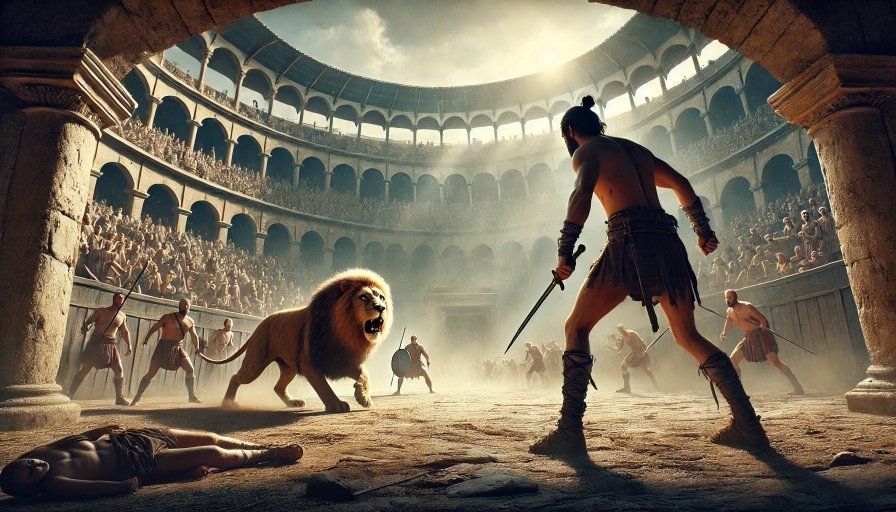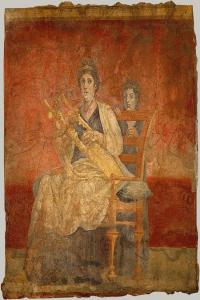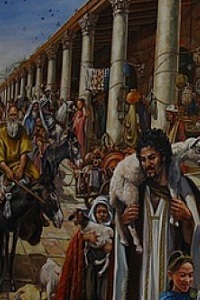Entertainment in Ancient Rome: A Glimpse into Roman Leisure and Festivities
Updated on: 30 December 2024Reading time: 4 minutes
Roman entertainment was diverse, offering numerous activities and celebrations. Romans enjoyed many holidays—there were 180 holidays during the early empire, when citizens often refrained from working. Later, Emperor Marcus Aurelius reduced the number to 135 to boost the economy. However, within a century, the number of holidays increased to 200 days! Most of these were religious in nature, involving visits to temples for offerings, with priests leading processions through the streets.
Roman Amphitheatre
The Roman amphitheatre was a central hub of entertainment. Here, Romans watched gladiators battle wild animals, fight one another, or even witness Christians being devoured by lions. Gladiatorial combat sometimes re-enacted historical battles. For instance, the Colosseum in Rome, which could accommodate 50,000 spectators and was funded by spoils from the first Roman-Jewish war, staged naval battles. It was flooded with water to allow gladiators to re-enact these events, often fighting to the death.

|
Roman stadium
Another popular venue was the Roman stadium (circus), where chariot races drew massive crowds. Much like modern NASCAR or Formula One races, these events were thrilling and intense. Although little remains of the Circus Maximus in Rome, which seated 250,000 spectators, visitors can still appreciate its size and layout, as portions of the track are visible today.
Rome had eight stadiums dedicated to chariot racing. The lightweight chariots, designed for a single standing driver, were drawn by up to four horses, achieving incredible speeds. Crashes were common; the charioteer would be thrown from the chariot, often suffering severe injuries. The movie Ben Hur vividly depicts these dramatic races.
Roman Baths
Visiting the thermae (public baths) was another favourite pastime for Romans. They typically went after work, around 3 or 4 p.m., and spent several hours socializing with friends. For more details, check out our page about Roman baths.
Roman theatre
Romans also attended theatres, many of which still exist today. These semi-circular structures featured rows of seating for thousands of spectators, rising from the base where the orchestra was located. Behind the orchestra stood the stage, where actors performed plays, often tied to religious festivals honouring the gods. The performances included comedies, farces, tragedies, and pantomimes. The atmosphere was lively—spectators frequently chatted during plays and occasionally threw objects at actors if they disliked the performance!
The Campus
The campus was a large recreational area for sports and physical activities such as running, wrestling, boxing, and fencing. Some games involved throwing a ball high and catching it before it hit the ground. After exercising, Romans would refresh themselves in the Tiber River or relax at the thermae.
Dinner parties
Dinner parties in the triclinium were a significant aspect of Roman social life, often lasting hours. Guests reclined on sloping couches arranged around a table and ate with their hands. Entertainment such as plays or dancing was sometimes provided. Wealthy Romans often stayed late, using oil lamps to light their gatherings. Poorer Romans, unable to afford oil lamps, tended to retire early. For more about the triclinium, visit our page on Roman food.
Shopping
The Forum served as the primary shopping and socializing area. It housed shops selling everything from food to jewellery. Rome also had shopping malls, some catering exclusively to wealthy citizens with luxury goods.
Board Games
Romans enjoyed various board games, many of which have been discovered by archaeologists. Unfortunately, the rules of these games remain a mystery. Some used dice, much like modern games. Board games were especially popular with soldiers, who used them to pass the time.
Interesting Facts About Roman Entertainment
|
SOURCES
- Life, Death, and Entertainment in the Roman Empire (D. S. Potter D. J. Mattingly, University of Michigan Press, 2010)
- The Story of the Roman Amphitheatre (D. L. Bomgardner, Routledge, 2002)
- Roman Theater and Society (W. Slater, University of Michigan Press, 1996)
- Campus Martius: The Field of Mars in the Life of Ancient Rome (P. W. Jacobs II D. A. Conlin, Cambridge University Press, 2014)

